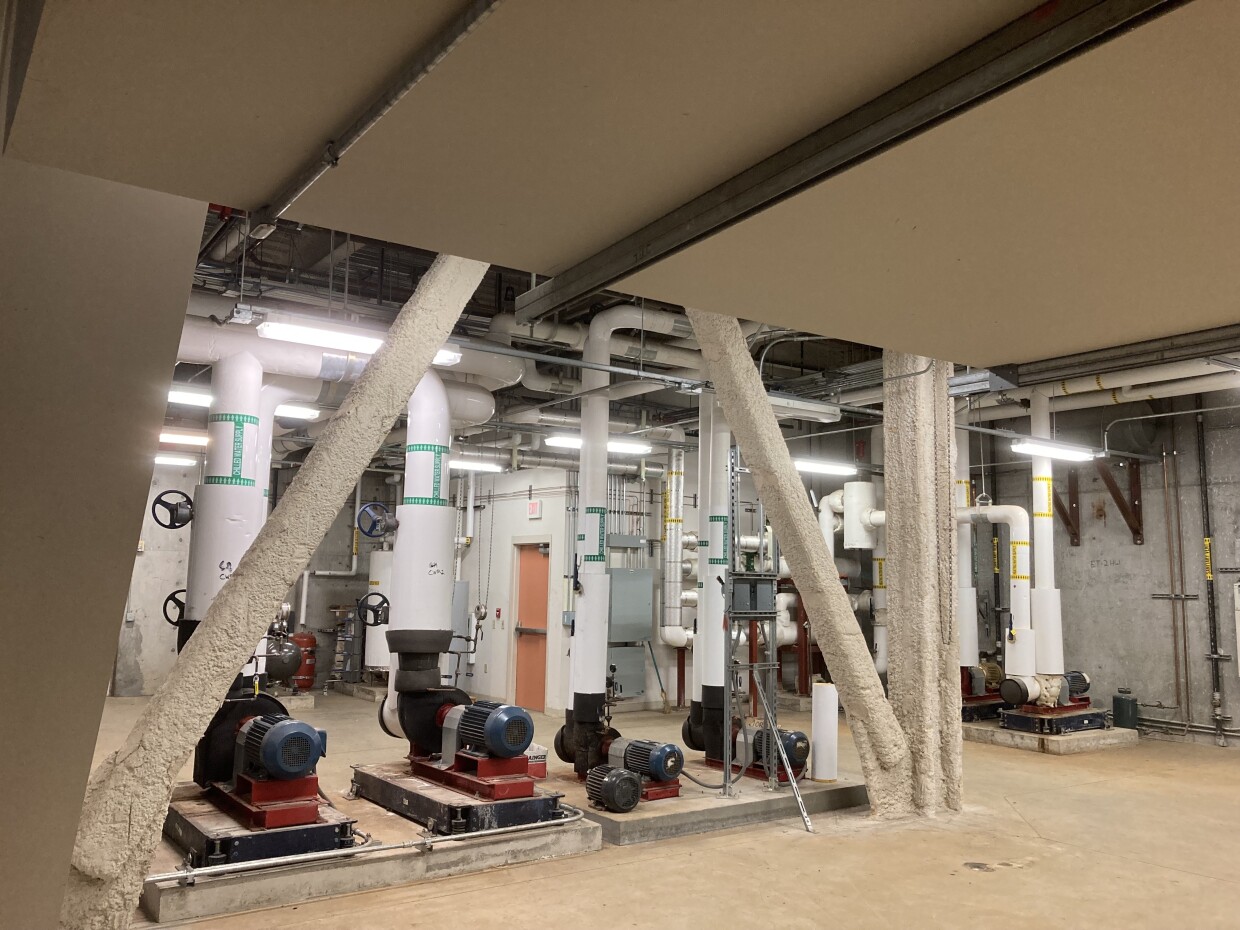There is a huge metal grate, just outside the UCSD Computer Science and Engineering building. It is as long and wide as a greyhound bus — in fact, a bus would probably fit in the concrete room under the grate.
The constant whoosh of air in the building’s basement is a sign that the building is working to keep the air in the structure safe.
“That’s the air from outside,” said Rajesh Gupta, a computer science and engineering professor at the school.
The building’s complex machinery is constantly drawing in the outside air.
“So, pretty much every large building will have an intake like this,” Gupta said.

And systems like these might need to be changed as officials continue to deal with airborne viruses like COVID-19. The heating and cooling systems were not designed to protect inhabitants during a pandemic.
Outside air is drawn in and pulled through a wall of filters. Those filters are effective enough to make sure the air pumped into the building is relatively clean, but they are not the same level of filtration a person would find at a local medical building.
“This is the supply side,” Gupta said as he walked past four very large chambers, each accessible through a sealed door that looked like it could be in a submarine.
Gupta’s colleague Charles Bryant is in charge of the UCSD’s heating, ventilation and cooling systems.
The fans drive the heart of this building’s air delivery system, according to Johnson, who said they are powerful enough to push massive amounts of air through the four-story structure.
“They’re blowing 45,000 cubic feet a minute. So, it’s 180,000 cubic feet a minute of air coming in here,” said Bryant.
Keeping this system running is crucial because, as Gupta points out, the building’s windows don’t open.

“So, they’re (modern buildings) designed to recirculate air because ... that’s the main way you save energy,” said Gupta.
But there’s a catch to saving energy.
Recirculating air can push virus-tainted aerosols around the inside of a building and that can increase infection rates. It is something researchers in New York City noticed in their tall buildings early in the pandemic.
So, Gupta and his UCSD colleagues began looking at how to change air circulation patterns in buildings and even rooms.
“I can actually control every single room in this building,” said Xiaohan Fu, a UCSD graduate student.
With a simple command on a laptop, Fu can change the entire building’s airflow, or just the airflow in an individual classroom.
Fans can be powered up to circulate more air when people are detected. And less air when rooms are empty.
“They can send a very simple request to our server,” Fu said.

The building’s computer brain, located in the basement near the massive fans, uses carbon dioxide sensors to detect when people are in a room, so building managers don’t have to constantly check them.
The whole system is designed to minimize exposure to a virus like COVID but it is not enough according to a prominent atmospheric chemist.
“We spend 91 percent of our time indoors. And the air that we breathe indoors is often far worse (than outside),” said Kim Prather, a researcher at the Scripps Institution of Oceanography.
Infected airborne particles can build up in an enclosed space, like invisible and odorless second-hand smoke, according to Prather.
But, she said making complicated or costly changes to a building’s existing heating and cooling system might not be enough.
“It does do some. It filters some,” Prather said, “But when you’ve got a virus that’s this infectious you don’t have to breathe very much of it. And so, it’s not enough by itself.”
Masking remains a crucial strategy to fight the spread of COVID-19, but Prather points out that it is not the only tool.
Prather is a huge supporter of Corsi-Rosenthal boxes. That’s an ordinary box fan on top of four highly rated furnace filters.
The do-it-yourself device can clean 90% of the air in a room in just 15 minutes and it does not cost hundreds of dollars like some commercial HEPA, high-efficiency particulate air filters.
“They actually outperform the HEPA, which is something I appreciate during the pandemic,” Prather said. “They’re faster. They pump much more air, so much more quickly.”
The homemade boxes also circulate a room’s air, eliminating pockets of infected aerosols that can collect in a room’s eddies, she said.
The devices have caught the eye of Rajesh Gupta.

He puts his hand on a Corsi-Rosenthal box sitting in the common area of a UCSD computer lab.
“It cleans up the air, much more inexpensively,” Gupta said. “Because all you have to do is find or buy the four filters and put a $40 fan on it.”
The pop-up filters are more cost-efficient than spending hundreds of thousands of dollars upgrading a building’s air filtration system, but they are a stop gap solution.
Gupta said, eventually, building design will have to adapt to better protect people from airborne viruses like COVID-19.








